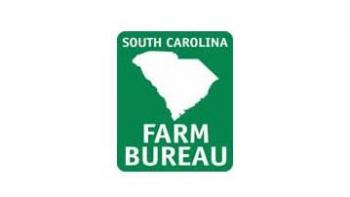FRED Response to Farm Bureau & Surface Water Withdrawal Law
Individuals representing the South Carolina Farm Bureau and the agricultural business community are saying that "sound science" is the basis of both the 2010 South Carolina Surface Water Withdrawal Act and a recent water-withdrawal registration granted to an Aiken potato farm. Some agricultural leaders are saying there is no problem with the new surface water law and it needs to be given time to work.
This opinion, the assertion that South Carolina's new state water law is science based and sound, is something we've heard repeatedly, and we (Friends of the Edisto) must respectfully disagree.
We disagree because our experience with the new state water law and its application to the Aiken potato farm has revealed to us serious technical, scientific, as well as policy deficiencies with the new law. Among our concerns are the following:
Agricultural is not subject to most requirements of the Surface Water Withdrawal Act. There is no public notice, and no science-based evaluation of how a proposed agricultural withdrawal will affect the downstream users during the natural cycles and seasonal fluctuations of stream flow. Agricultural water users simply register with DHEC and if the proposed withdrawal meets the so-called "safe yield" calculation then rights are granted to take water. The way the law is currently written, there is nothing to limit agricultural users from taking all the available water from a stream during dry periods. How can this be?
The "safe yield" criterion of the Surface Water Withdrawal Regulations (R.61-119) sets up the problem. "Safe yield" is a measure of how much water can be taken from a stream and allocated to withdrawals; however, the "safe yield" determined according to the regulations is not reasonable and has no merit of safety. It will allow far too much water to be taken from our streams.
As an example, the "safe yield" calculation for the South Fork Edisto River at the Aiken potato farm site (Walther Farms) was determined to be 298 cubic feet per second (cfs). Applying the state's water law, this "safe yield" calculation will allow the entire amount, 298 cfs, to be withdrawn from the river at that site. While, the potato farm is currently registered to take 20 cfs (400 million gallons per month), the law plainly allows for the remaining "safe yield" (278 cfs, which is 14 times more water) to be taken from the river at that site.
Now, note this: The scientific reality is that during typical dry summer seasons when streamflow declines, the "safe yield" amount of water is often not available in our rivers. See Figure 1 (below) which presents streamflow conditions compared to "safe yield" in the South Fork Edisto River at the Walther Farms site. "Safe yield" exceeds mean and median flows during drier months of the Summer and Fall, and "safe yield" exceeds all minimum monthly flows by as much as two to four times. During Summer 2014 we witnessed a four month period when the "safe yield" was not available in the South Fork Edisto River, and in July 2014 there was a period when the "safe yield" flow was nearly four times the actual flow in the river. (See the Summer 2014 graph - how "safe yield" poses threat to our rivers.)
These facts about "safe yield" are not new. The South Carolina Department of Natural Resources (DNR) identified the problem in their September 26, 2011 comments to the DHEC regarding draft Surface Water Withdrawal Regulations, which were under review at that time following passage of the Act in 2010. (See DNR comments.)
DNR's critique of "Safe Yield" includes the following points: 1) "safe yield" will not be available in most streams more than half the time; 2) "safe yield" presents unrealistic, high values, which are not available during dry periods; and 3) "safe yield" will not adequately protect natural resources.
Clearly, it is not reasonable to allow water users to withdraw the calculated "safe yield" flow from a river, as the new law allows, when only a fraction of that flow is actually available in the river. Doing so would be poor stewardship based on inadequate consideration of science. Yet, agricultural water users may take all the"safe yield" flow from our rivers with little to no science-based evaluation by either DHEC or DNR.
Not only does the new water law (with its flawed "safe yield" concept) allow too much water to be allocated to withdrawals, it also falls short by not providing an adequate safety net to protect our rivers with required minimum flow standards. Agriculture and pre-existing (grandfathered) water withdrawals are not subject to a minimum flow standard as defined in the law, so a safety net (a protected minimum flow) does not apply to most water uses who are withdrawing water from our rivers.
As presented here, we think the new water law has significant deficiencies from a technical, scientific, and policy perspective, and if not corrected by legislative actions, the deficiencies will inevitably lead to over-allocation of water, conflicts among water users, and the eventual depletion and degradation of our rivers and streams.
For more information, see: 1) FRED outline/points of concerns with SC Surface Water Law and 2) DNR comments on Surface Water Regs of 2011 and 3) Graph to explain how "safe yield" poses a threat to our rivers.

